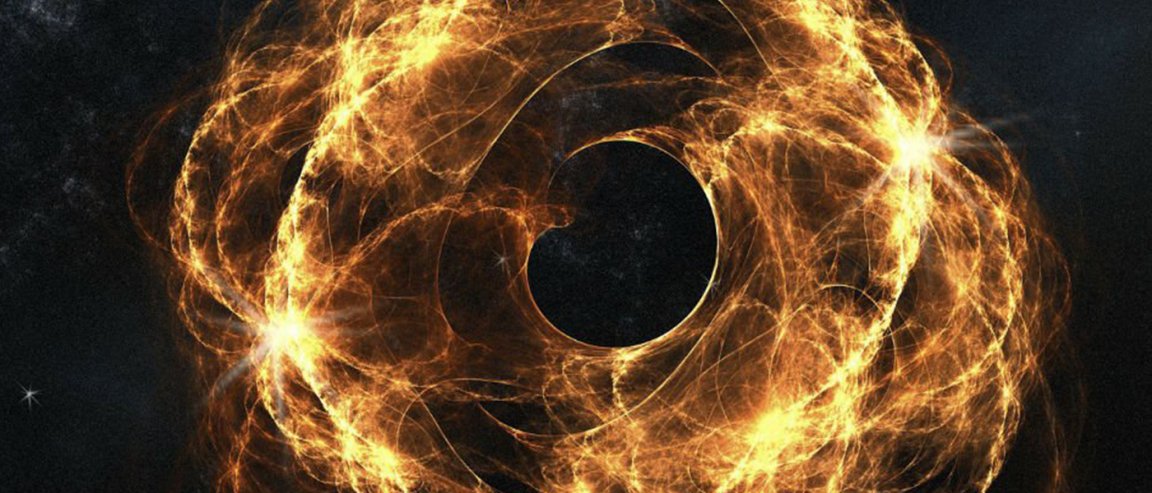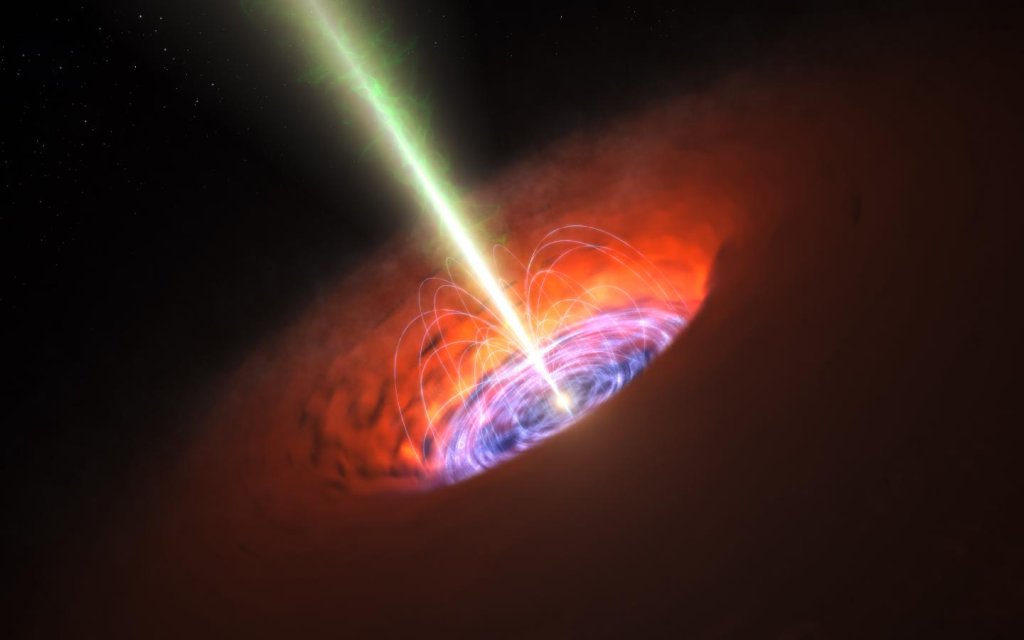
One of the greatest mysteries in modern science is dark matter. If you aren’t familiar with the topic, dark matter and dark energy are the two “missing pieces” of our universe. They are needed to explain the geometry of space and the total amount of observed matter that exists in space; in short, they explain the large scale structure of the universe and the observed expansion of our universe.

We have evidence for dark matter because we can observe the way that it interacts gravitationally with visible matter and electromagnetic radiation; however, we’ve never actually seen it.
This is a bit of a problem.
Thanks to a number of observations, we know that dark matter is out there, and that it makes up some 26.8% of the total energy density of the observable universe…we just don’t know what it is. As a result, a number of individuals have come up with interesting hypotheses about what makes up dark matter. One of the more intriguing ideas deals with everyone’s favorite cosmological objects—black holes.
Uncovering Black Holes
Black holes are the most massive and powerful objects in the known universe. In fact, they’re so massive, and they warp spacetime so much, that (if it gets too close) not even light can escape its clutches. Since light can’t escape a black hole, is it possible that these enormous structures are really dark matter? After all, dark matter is, in essence, just a huge accumulation of matter than we can’t see.
So. Could black holes be the answer to the puzzle? Well, not quite.
Remember, black holes are the most powerful objects in the known universe. As they wander about the cosmos, they tend to make their presence known. They do this through a variety of ways. First, there is gravity. We can “see” black holes (or at least, see the effect that they have) by measuring their impact on the matter around them.
A clear example of this are the supermassive black holes that live in the center of galaxies. Looking toward the center of our own galaxy, we see stars swinging about at excessive speeds. And as Ann Martin, from Cornell University, notes, the only thing that explains the extreme speed of these stars is a supermassive black hole. Indeed, Martin notes that, “Using this and the equations that describe the orbits of these stars, we can actually estimate the mass of the black hole.”
And this isn’t the only way that the gravity of a black hole allows us to detect them. Like all massive objects, they warp light, changing its direction as it travels across space. This is known as “gravitational lensing,” and it allows us to see black holes (or detect their existence).
Second, there is the accretion disk. Don’t know what an accretion disk is? Essentially, an accretion disk is a horrifyingly hot ring of fire that surrounds a black hole. It forms because, as matter falls in towards a black hole, it doesn’t fall straight in; rather, it swirls around and around as it gets closer (kind of like a vortex). As it swirls, the matter rubs together, causing friction, and that causes a lot of heat. Ultimately, this fiery mass of matter gets heated to hundreds of thousands of degrees.
So if a black hole is feeding, we will definitely see it.

In short, it’s unlikely that there are a horde of black holes wandering about the cosmos undetected, because we can detect black holes, and we do.
Third, we know that dark matter exists because of our mathematical graphs of how fast the material in a galaxy is rotating in relation to the center of the galaxy (where most of the galactic material is located). And as a result of these graphs, we know that dark matter surrounds galaxies. In the end, the farther out you go, the more mass grows…and it grows by a lot. So in short, we know that dark matter isn’t just some black hole that exists out in the middle of intergalactic space based on the way that galaxies rotate and evolve over time.
And Another Thing…
In the end, a firm understanding of what we know about dark matter helps to answer the question conclusively. As Emma Grocutt, from the CFHTL Survey notes:
The most interesting thing about dark matter is not simply that we can’t see it, it’s that we know dark matter is not made of the same stuff as normal baryonic matter. This is actually why we can’t see it—baryons interact with each other through gravity, nuclear forces and the electrostatic force. These interactions are what allow baryonic matter (such as stars) to emit light, and what prevent you from putting your hand through a table—the particles of your hand are electrostatically repelled from the particles in the table. Dark matter, however, only interacts through gravity. This is why we see its effects on the motions of galaxies and stars, but why we can’t see it directly; it does not emit or absorb light. Dark matter particles can also pass through regular matter almost completely undetected since they don’t interact electrostatically, meaning we can’t touch it or sense it in any direct way.
Thus, the main issues with thinking that dark matter might be black holes is the assumption that dark matter is just like baryonic matter (the matter that makes up everything that we can see and measure). It’s not. Or thinking that black holes are strange objects that interact with normal matter differently than other cosmic objects (like stars). They don’t. Black holes are just massive accretions of normal, everyday matter.